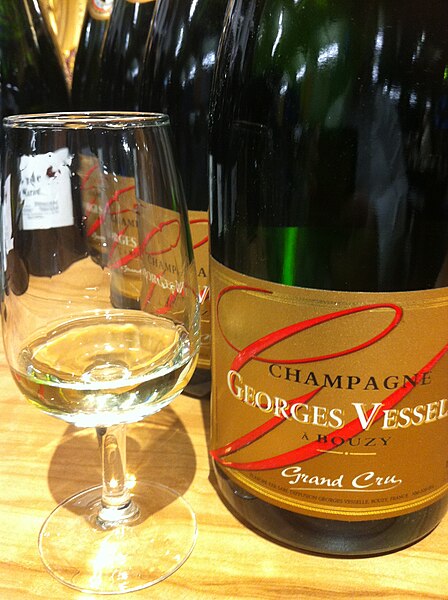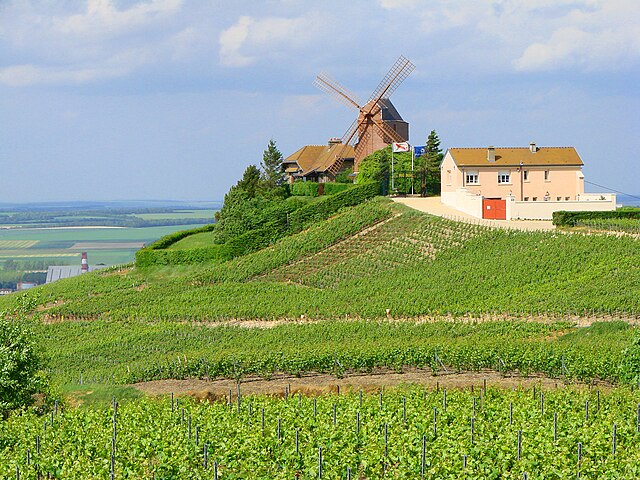Classification of Champagne vineyards
The classification of Champagne vineyards developed in the mid-20th century as a means of setting the price of grapes grown through the villages of the Champagne wine region. Unlike the classification of Bordeaux wine estates or Burgundy Grand cru vineyards, the classification of Champagne is broken down based on what village the vineyards are located in. A percentile system known as the Échelle des Crus acts as a pro-rata system for determining grape prices. Vineyards located in villages with high rates will receive higher prices for their grapes than vineyards located in villages with a lower rating. While the Échelle des Crus system was originally conceived as a 1-100 point scale, in practice, the lowest rated villages are rated at 80%. Premier crus villages are rated between 90 and 99 percent while the highest rated villages, with 100% ratings are Grand crus.
A Grand Cru Champagne
Vineyards in the Grand cru village of Verzenay
A Grand Cru Champagne from the village of Ambonnay.
The classification of wine is based on various criteria including place of origin or appellation, vinification method and style, sweetness and vintage, and the grape variety or varieties used. Practices vary in different countries and regions of origin, and many practices have varied over time. Some classifications enjoy official protection by being part of the wine law in their country of origin, while others have been created by, for example, growers' organizations without such protection.
Dark purple wine grapes on the vine




